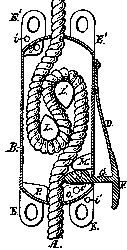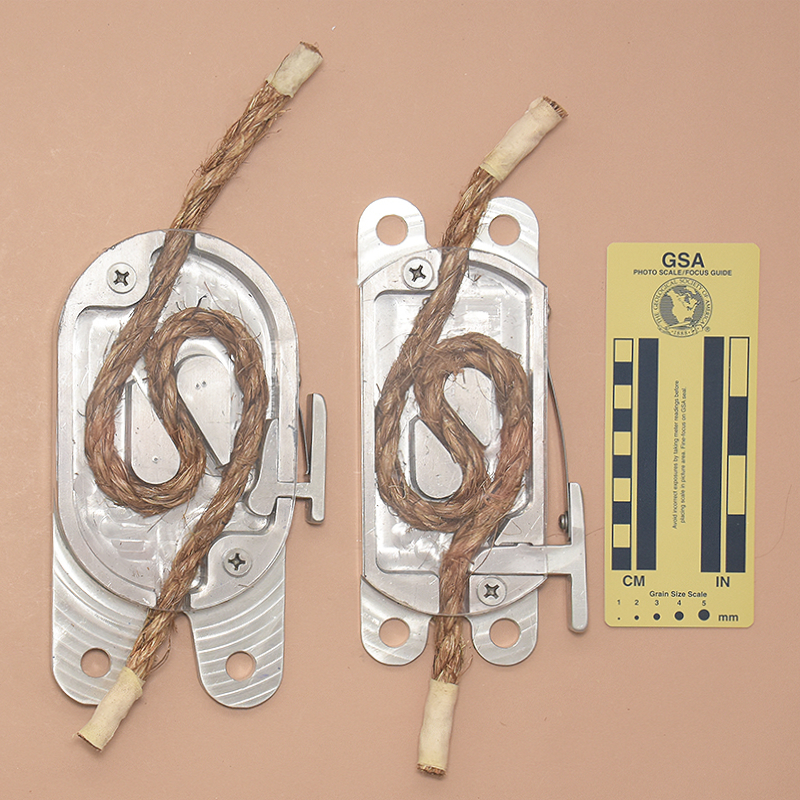 Technical Details
Technical Details
I made this copy of the Davis Fire Escape in 2023 using the figures in U.S. Patent #269,268 as a guide.
My Davis Fire Escape is 202 mm. tall, 113 mm. wide, 26 mm. thick, and weighs 728 g.
The body has two internal teardrop-shaped bollards that guide the rope in an S-shaped path similar to the Bobbin rope path.The rope enters from the bottom and exits at the top. A spring-loaded plunger on the right side forces the plunger nose against the rope. The cover plate screws in place.
The body and plunger are 6061-T6 aluminum. The cover is an unknown aluminum alloy that is softer than 6061.
I stamped my logo on the front cover.
This is Ocscar Davis' 1882 improvement to the Fire Escape that Eugene Rotschka and he patented in 1878.
The patent does not specify the material or construction method. I suspect cast brass, but there is no evidence to support this. I decided to mill my copy from aluminum alloy. I scaled my copy by assuming the patent drawings used ½-inch (12.7 mm.) diameter rope. I made minor modifications to the spring and plunger mechanism that should not affect their performance.
The user must depress the plunger to slow their descent. Failure to do so may result in a free fall, depending on your weight and the rope in use. Considering their intended users would be untrained in SRT, this may be asking too much, but a big splat may be better than becoming a crispy critter.
I do not like how the rope runs over itself in opposite directions. This could melt the sheath of modern synthetic ropes, but traditional laid manila lacks this ubiquitous flaw of modern ropes. The bend radii on the bollards is less than the well-known 8-rope-diameter criteria for manila rope. Repeated descents may damage a manila rope, but fire escapes are not intended for repeated day-to-day use.
Finding a suitable rope is a problem. The Fire escape was designed for natural fiber laid rope. The best choice would be high-quality manila. Manila ropes tend to be oversize and 1/2-inch (12.7 mm) does not fit. High-quality 7/16” (11 mm.) manila is not readily available, and the breaking strength of 3/8 (9.5 mm.) is too low. Modern ropes are not good choices. PMI Pit Rope’s stiffness barely allows getting the rope into the device. Once in, it generates so much friction that descent is impossible. Normally this would be safe, but not when escaping a burning building (something cavers no longer seem to do very often). Mountain-lay Goldline is also too is stiff. Kernmantle climbing ropes are more flexible and allow descent, but their thin sheaths lack glazing margin.

Rotschka & Davis' 1878 design on left
Davis' 1882 improved design on right.

For far more content, use a larger monitor and a full-width window.
Hundreds of cell phone users complained and asked me to for a simpler, mobile friendly site. In particular, they wanted me to limit each page to a small number of pictures and minimize my use of text. This new site provides what they asked for.


